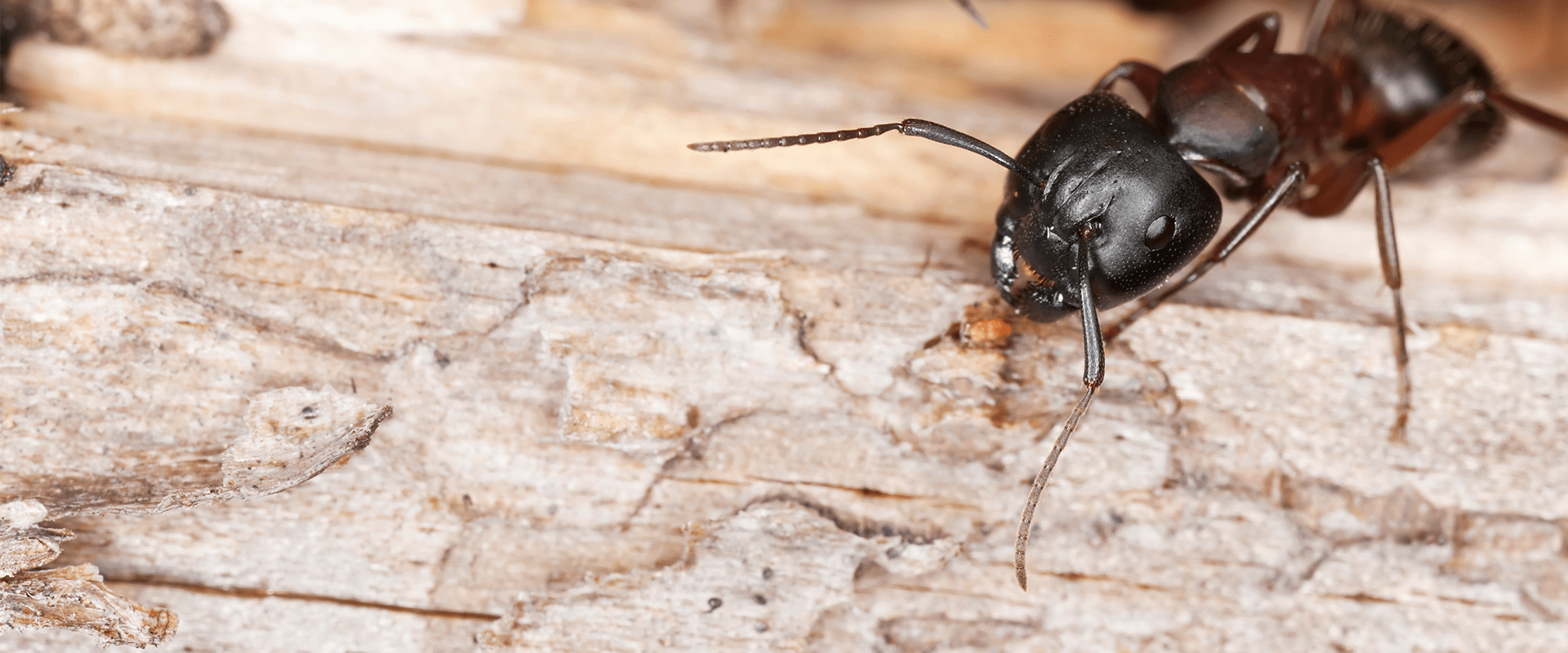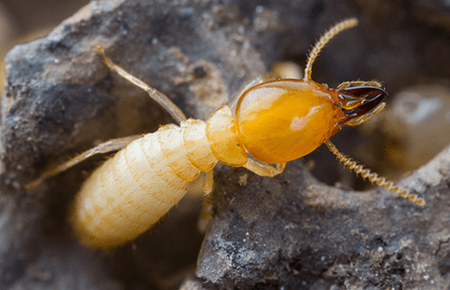Get a free estimate
If you have questions about our services, plans, or pricing we are here for you. Fill out the form below and we will communicate with you by email (and of course provide you with a free estimate).
FEBRUARY 25 2022 / HOME
If you have a few ants crawling around your kitchen or pantry, it may be no big deal. Nesting ants that enter your house to forage for food aren't too much of a problem. They can crawl up vertical surfaces and get in through some pretty tiny holes.
But if those ants you see in the kitchen came from a colony inside your walls, that could be bad, especially if they are carpenter ants.
Before you are trying to recognize if there's an ant infestation going on in your home, make sure you're not dealing with something else, like termites.
If they have a narrow, pinched waist, elbowed antennae, and differing wing sizes between their two sets, they are ants.

Termites, on the other hand, have a thick waist, making their bodies the same size all the way down their abdomen. They also have straight antennae and two sets of the same size wings.

Ants could get inside of your home for many reasons. Food is, by far, the greatest factor that attracts ants to your house. Ants are foragers and will come inside as they search for food.
If they find a good food source, they will continue to return on a steady basis. Oftentimes this is not an indication that they are living inside your house, but simply using it as their main food source.
Carpenter ants are usually black but can sometimes have a reddish tint to them. If you have an army of them crawling across your floor to get to the pet food dish, you'll know it.
Even thought carpenter ants are not a threat for humans, they can cause severe property damage as they tunnel through wood to build nests. If not dealt with, they will make you spend tens of thousands of dollars in repairs costs.
On the other hand, odorous house ants are dark brown to black in color and range in size from 1/16-1/8 inch, and they are known for nesting in wall cracks as well as under floors inside homes.
These ants can't cause any structural damage to your property or transmit any disease to one of your loved ones, but they do can contaminate food and should be avoided if there's signs of activity inside your home.
Pavement ants could look like house ants but they have more like a darkish brown to black in color and are about the same size.
You'd probably have seen their nests in or under cracks in pavement, and even though these ants do not pose a public health risk, they could contaminate some of your food too.
There are a few things you can do to determine if you have ants living inside your walls.
If the ants you have are carpenter ants, that is a sign in and of itself. Carpenter ants prefer to live in wood. If you don't have any rotted wood around your home, there is a good chance they have a nest in your walls or floors.
Listening to your walls or floors. You can hear insect activity if you put your ear close enough to a colony.
Look for rotted areas on the exterior of your home. You'll usually find rot where gutters are broken or rainwater rests next to the house.
Hire a professional to do an inspection. When you get a company that has certified entomologists on staff, you'll know that they have the knowledge to find those ants. 80% of what pest technicians do when they treat your home for ants is to locate and eradicate colonies. They don't just spray around your house and hope for the best. If your pest controller is doing that, get a new one.
Cracks between bricks, or tiny holes around doors and windows, are some of the perfect entry points for ants to enter your home. They can maneuver through the tiniest of spaces.
This includes electrical and plumbing lines that enter your home's structure from the outside.
An ant lays down a broken trail of scent when they forage for food, resembling a 'dotted line' of chemicals that they secrete.
When they find food, (a drop of juice, a few crumbs, or fallen food in those hard to clean places) the foraging ant fills up its ‘social stomach’ with as much food as it can.
Once it is full, if there is any food remaining, the ant scurries back to its nest leaving a continuous line of scent along the way.
The ant will begin sharing food with other members of its colony through its social stomach and other ants will begin to follow the traced scent back to the food source.
Every time an ant visits the food source, it adds to the effectiveness of the scent trail.
Sometimes, ants find their way into your bathroom, your cabinets, and around your kitchen sink drain
If the ants in your home came from outside, there are some things you can do to stop them from coming in.
Keep things clean. They're looking for food sources.
Protect cabinet food. If they're in your cabinets, put vulnerable food in sealed plastic containers.
If they are going for a pet food dish, put the dish down only during meal times and spray some vinegar and water around the bowl (1 part vinegar and 3 parts water).
If you see an ant trail, spray the entire trail with window cleaner, soapy water, or the vinegar concoction above. This will get rid of the trail pheromones ants leave behind. This scent is what allows them to travel in a path to where food is.
Use a caulking gun to seal up entry points.
If you have an ant infestation in your walls, it is a sign that your home is in need of some treatment. Consider getting those problems fixed by a professional pest control company to help exterminate ants and prevent them from coming inside your property.
Give us a call for free or fill out this form and get a free quote from one of our pest experts You have a lot invested in your home. Keep it safe from destructive pests.